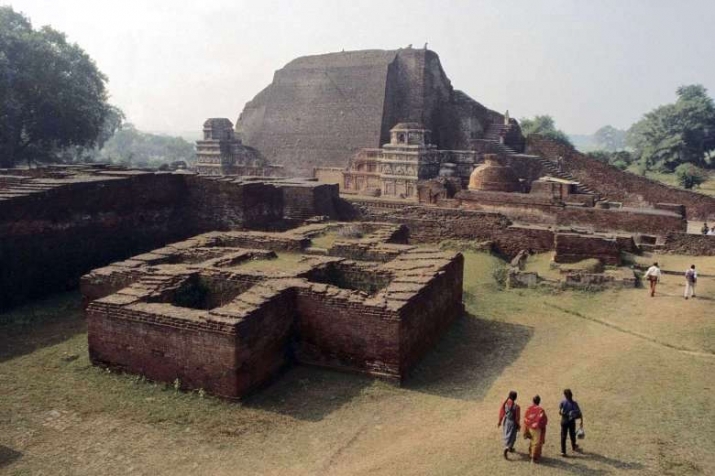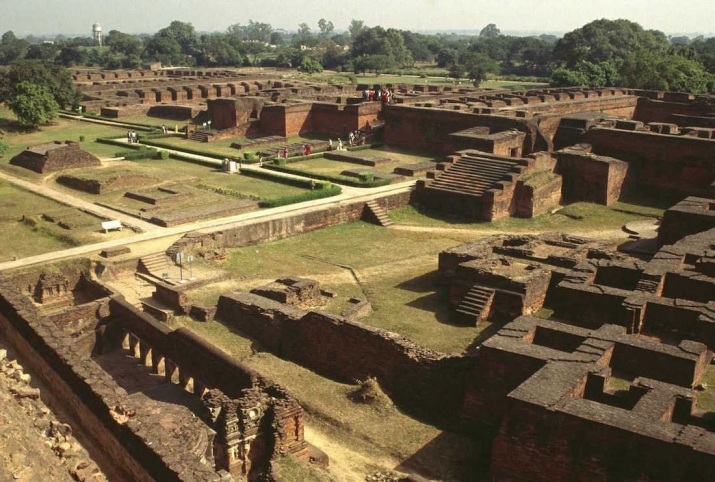NEWS
Ancient Nalanda University Now a UNESCO World Heritage Site
 The ruins of Nalanda University in Bihar, India. From straitstimes.com
The ruins of Nalanda University in Bihar, India. From straitstimes.comThe excavated ruins of Nalanda, one of the most historically significant seats of Buddhist learning in ancient India, have been declared a UNESCO World Heritage Site, following a seven-year bid by India to have the historic site recognized by the UN’s cultural agency.
An announcement by UNESCO on 15 July also placed three other sites of special interest from around the world on its World Heritage List: China's bronze age Zuojiang Huashan rock art cultural landscape, Iran's ancient aqueducts known as qanat, and Micronesia's artificial islets of Nan Madol, of which the latter was simultaneously placed on the List of World Heritage in Danger. Assembled in the Turkish city of Istanbul from July 10–20, the 40th Session of World Heritage Committee has been reviewing 27 sites—14 cultural, nine natural, and four mixed—that have been nominated for the World Heritage List.
Noting that the site “includes stupas, shrines, viharas (residential and educational buildings), and important art works in stucco, stone and metal,” UNESCO said in its statement that, “Nalanda stands out as the most ancient university of the Indian Subcontinent. It engaged in the organized transmission of knowledge over an uninterrupted period of 800 years. The historical development of the site testifies to the development of Buddhism into a religion and the flourishing of monastic and educational traditions.” (UNESCO)
Said to have been the world’s first international residential university, Nalanda was a renowned mahavihara or Buddhist monastery and center of learning in Magadha, one of the 16 kingdoms of ancient India. It was established in the 3rd century as a monastery, before being developed as a university in the 5th century. At its peak, Nalanda accommodated more than 2,000 teachers and over 10,000 students, attracting scholars and students from as far away as China, Indonesia, Korea, Persia, Tibet, and Turkey. Located in the eastern Indian state of Bihar, some 60 miles from the state capital Patna, Nalanda was uncovered during excavations by the Archaeological Survey of India during 1915–37 and 1974–82.
“It is a matter for pride for Bihar as well as the nation," said superintending archaeologist Pravin K. Mishra following the UNESCO announcement. “The ancient Nalanda University was a major mahavihara or a large Buddhist monastery that also doubled up as an important center of learning . . . in the erstwhile kingdom of Magadh.” (The Times of India)
 Nalanda was excavated by the Archaeological Survey of India during 1915–37 and 1974–82. From cntravaller.in
Nalanda was excavated by the Archaeological Survey of India during 1915–37 and 1974–82. From cntravaller.inThe noted Chinese Buddhist monk and scholar Xuanzang (602–64), who spent many years traveling in India, visited Nalanda first in 637 and again in 642, spending a total of about two years there. The monk, who attended courses in grammar, logic, Sanskrit, and the Yogacara school of Buddhist philosophy, left a detailed written description of the university and its stupas, monasteries, temples, and meditation halls.
Nalanda was ransacked and destroyed in the 12th century by an invading army commanded by the Turkic general Bakhtiar Khilji (d. 1206). According to references in literature, both Nalanda and the university of Vikramshila were sacked in 1193. In his historical chronicle of the Islamic world Tabaqat-i-Nasiri, the Persian historian Minhaj-i-Siraj reported that thousands of monks were burned alive and thousands more beheaded as Khilji sought to uproot Buddhism. The burning of the university’s library lasted several months and “smoke from the burning manuscripts hung for days like a dark pall over the low hills.” (Wikipedia)
See more
Four sites inscribed on UNESCO’s World Heritage List (UNESCO)
UNESCO declares Nalanda Mahavihara World Heritage Site (The Times of India)
Nalanda University declared World Heritage Site by UNESCO (American Bazaar)
India has a new UNESCO World Heritage site (Condé Nast Traveller)
Unesco adds India's ancient Nalanda University to World Heritage list (The Straits Times)
Nalanda University Reviewed as Potential World Heritage Site (Buddhistdoor Global)














